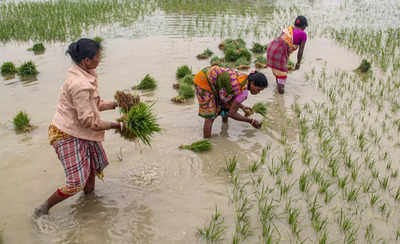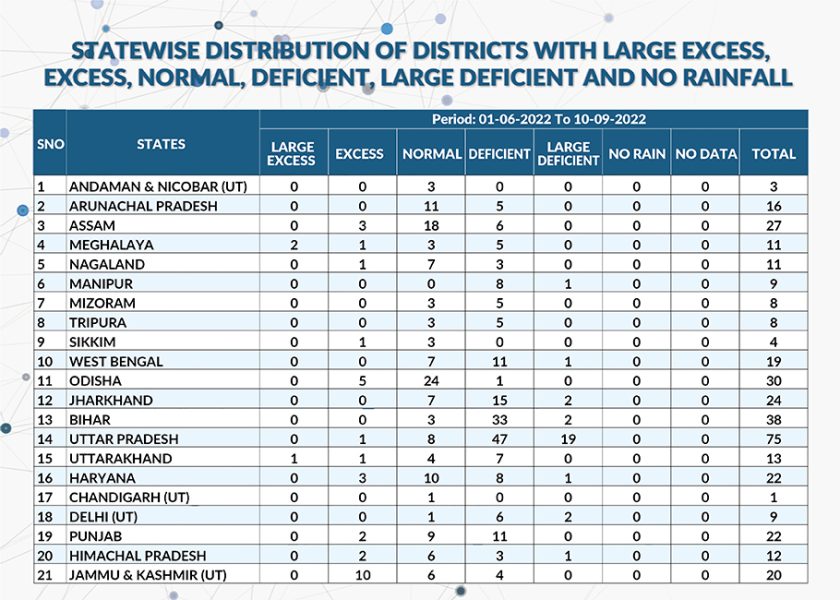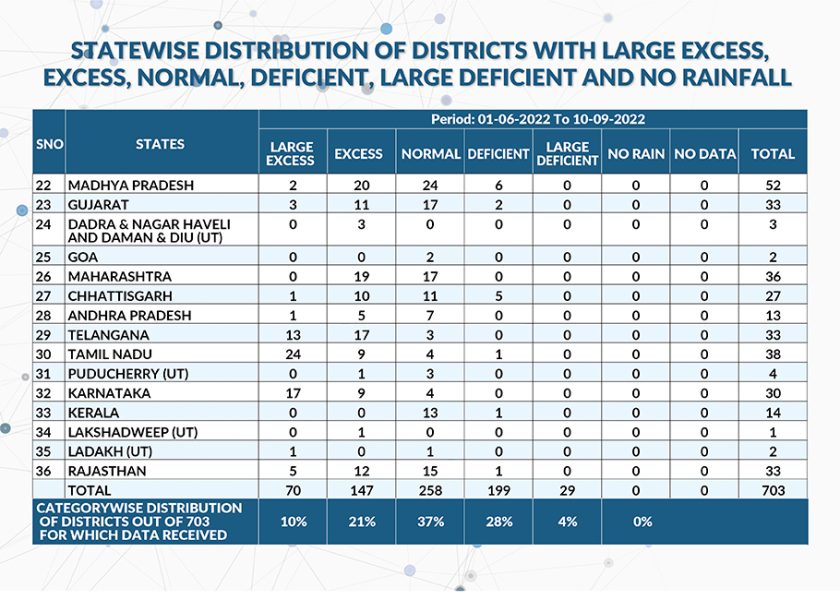
Kharif acreage down with dual wrath of nature — droughts and floods
Yet, there seem to be fewer chances of shortage in the country with enough grains in food stock; the Centre has also taken steps like tightening exports to help against the situation turning worse

Indian farmers are facing the wrath of nature in many states and are predicting an overall fall in crop production, with acreage going down considerably. A sluggish monsoon followed by floods in some parts of the country has taken a toll on crops this year.
However, the initial gap in total area sown, as compared to the same time last year, has narrowed down somewhat. Official estimates and the tillers’ guesstimates still remain different on several accounts. Yet, there seem to be fewer chances of shortage in the country with enough grains in food stock. The Centre has also taken steps like tightening exports to help against the situation turning worse.
But it may ultimately be the grower who will be at the receiving end in these conditions.
Rice acreage falls
Rice production may fall up to an estimated 7 million tonnes this kharif season. The acreage this season for this staple food crop in the country has been 20.52 lakh hectare (ha) less compared to last year, as per official figures. However, the government has reasserted that the country will have surplus output.
Also read: With government policies, farmers’ debts shoot up while incomes wilt
The acreage had fallen by 14.18 lakh ha last year in comparison to 2019-20, which recorded a growth over 18.51 lakh ha against the 2018-19 Kharif rice season.
Suphal Mahato of Maheshpur village in Ranchi district of Jharkhand estimated his loss at about 50 per cent this year. That, when his village lies barely 50 km from capital Ranchi. He stares at the damage despite having his land watered from a nearby canal, unlike several others in the state.
“Sowing should have been over by mid-August. But due to rains playing truant, it went on till this month,” he sighed. According to him, though desperate farmers sowed paddy even during the last shower early September, output will be meagre.
In Jharkhand, coverage of kharif rice till September 8 was recorded to be across 8.24 lakh ha, against 17.61 lakh ha last year.
“We have been to Koderma, Ramgarh, Hazaribagh, Seraikela-Kharsawan, among other districts in Jharkhand. It’s only fields where water accumulates naturally that may produce some rice. Many farmers are migrating to cities in search of manna,” Mahato added.
In adjacent Bihar, rice acreage fell by 2 lakh ha this season compared to 2020-21.
A total of 393.79 lakh ha of rice acreage has been reported till August 9 in the country. In 2020-21 it was 414.31 lakh ha.
Desperate situation
All India Kisan Sabha (AIKS) general secretary Hannan Mollah termed the situation as a drought, especially in the northern and eastern parts of the country. He also lamented the absence of authentic ground reports.
In Punjab, the Centre’s report said, rice was sown across 31.33 lakh ha against 31.45 lakh ha in the corresponding period last year. “Most areas in Punjab are lying dry this monsoon. Though I appreciate certain measures taken by the state government, it’s not adequate,” said Hannan Mollah.
According to Badri Narayan Choudhary, President, Bharatiya Kisan Sangh (BKS), the government has not taken into account the effects on sowing and subsequent damage caused by widespread inundation in some states.
“I fear we may lose half the total production of most crops this year due to the dual vagaries of nature,” he stated.
The concern was echoed by Raju Shetti, founder of Maharashtra’s Swabhimani Shetkari Sanghatana. “The figures reflect part of the scenario. Even those farmers who somehow managed to sow, lost their crop to the devastating floods. The situation is particularly bad in Vidarbha and Wardha,” he claimed.


Besides Vidarbha and Wardha, rains tormented areas in Gadchiroli, Chandrapur, and Yavatmal in Maharashtra.
According to the ministry report, Maharashtra recorded an increase in rice acreage over 21,000 ha compared to the corresponding period last year. Earlier, the year-on-year increases in sowing area during the season were 44,000 ha and 85,000 ha, respectively.
Telangana recorded an increase of 5.34 lakh ha over 2020-21, which in turn was 4.83 lakh ha compared to the previous year. Interestingly, the jump in acreage in 2019-2020 was across 13.65 lakh ha compared to 2018-2019.
Sugarcane doing relatively well
“Sugarcane is doing comparatively well. We expect production to be around last year’s figures,” Shetti said, adding, “However, the crop will be affected as farmers are buying half the amount of inputs like fertilisers to compensate for spiralling costs.”
Shetti claimed that despite the Centre raising fair and remunerative price (FRP) of sugarcane from Rs 290 to Rs 305 per quintal, it is not enough to meet input costs.
In India, about 55.65 lakh ha area coverage under sugarcane has been reported compared to corresponding period last year when it was 54.70 lakh ha. In Maharashtra, sugarcane was sown till September 8 across 13.46 lakh ha while it was 12.32 lakh hectare in the last sugar season.
Not only rice, sowing of other Kharif crops has also suffered due to a sluggish monsoon. Till August 9, kharif acreage had fallen by more than 10 lakh ha this year as compared to the last season.
Though the all-India report of nearly 5 per cent fall in acreage of paddy may be a reason to worry, the gap in acreage has reduced since end-July.
The Agriculture Ministry’s fourth advance estimates pegs higher production of major agricultural crops fo 2021-22. It estimates a production of 315.72 million tonnes, which is higher by 4.98 million tonnes over 2020-21.
Other crops affected, too
The advance estimate of rice was at 130.29 million tonnes, pulses at 27.69 million tonnes, oilseeds 37.70 million tonnes, sugarcane 431.81 million tonnes, and cotton 31.20 million bales (each of 170 kg), among other crops.
India is the world’s second-largest rice producer after China. To meet growing demand, Bangladesh recently reduced the import duty on rice. The decision pushed up prices of rice in the Indian market by about 5 per cent last week.
Amid the fall in sowing area and increase in prices, the Centre banned the export of broken rice. To further discourage exports, it also imposed a 20 per cent export duty on non-basmati rice, except for parboiled rice.
Also read: Climate change has crippled weather forecasting agencies: IMD chief
Among other kharif crops, oilseed acreage too dipped despite the government’s thrust. About 189.74 lakh ha area coverage under oilseeds till August 9 has been reported, compared to 190.92 lakh ha in the corresponding period last year.
For pulses too, the total area sown depicts a grim picture. From 136.57 lakh ha last year, coverage under pulses till August 9 has been reported as 130.91 lakh ha this time.

